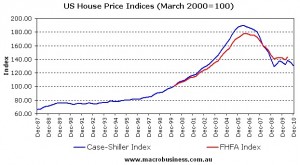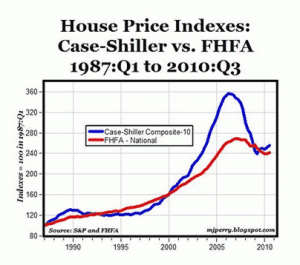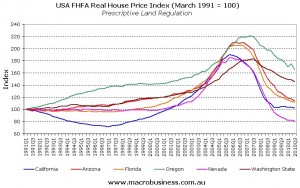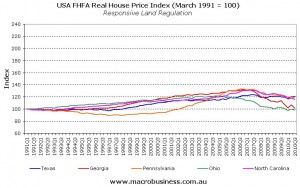Here's some food for thought -
A very commonly held belief is that population growth leads to increased demand for housing and hence leads to higher property prices. Population growth is very commonly cited as the reason for property prices continuing to rise and for property prices not falling by many property market commentators.
Auckland still has an increasing population and net migration, yet there is decreasing demand for housing? How can demand be decreasing in light of continued population growth? Why do you think that is? Are we missing something?
Quote from below article - With less demand, sellers are adjusting expectations and are more open to negotiation in order to get their property sold.
QV data shows New Zealand house prices falling
Property prices are falling, and those who have to sell or have problem properties are feeling the pain.
QV has released its latest House Price Index, which shows that nationwide residential property values fell 1.6 per cent over the three months to August.
In Auckland, prices were down 0.4 per cent in the quarter, in New Plymouth down 0.3 per cent, in Christchurch down 0.2 per cent and in Queenstown, down 1 per cent.
On an annual basis, prices are up 4.8 per cent on the same time a year ago. That annual rate is slowing - at the same time two years ago, the annual rate of growth was 14.6 per cent. In July this year, the annual rate was running at 5.2 per cent.
"Affordability constraints continue to change buyer behaviour. We're seeing an increase in demand for more affordable two-bedroom semi-detached units as well as apartments, particularly in our main centres. With population growth projected to continue to rise, I'd anticipate these types of properties will attract even more demand in future years, particularly in Auckland and Wellington City," said QV general manager David Nagel.
He said small provincial towns across the country were seeing strong growth and the southern part of the country, including Dunedin and Invercargill, was also increasing in price.
Overall, we're anticipating value growth to remain flat or steadily grow across most regions. The winter period has certainly taken the heat off the market and naturally, we'd expect the Spring period to inject new energy into the market.
"The market is currently experiencing polarising forces with key market drivers such as low interest rates, population growth and lack of supply, being countered by tightening credit conditions and a range of Government policy initiatives aimed at cooling the market."
"Spring is going to be a very interesting time for the residential property market as we see what unfolds when a few more buyers and sellers enter the market."
In Auckland, senior consultant James Steele said a drop in the number of investors in the market had opened space for first-home buyers.
We are continuing to see a high proportion of properties come to market as price by negotiation as opposed to auction. With less demand, sellers are adjusting expectations and are more open to negotiation in order to get their property sold. In general this has caused prices to soften with the biggest variation from the peak shown in properties which are poorly presented or have other issues.
The premiums paid before the latest round of loan-to-value restrictions were introduced were no longer seen, he said.
"As expected, we have seen minor fluctuations in price with some downward pressure through the winter months coming from those who needed to sell. At this stage, any larger downward pressure on property prices is likely to come from regulatory change or wider economic risks."
In Wellington, senior consultant David Cornford said rising rents were pushing buyers into the market. "Two-bedroom, semi-detached units are selling particularly well, as they provide a more affordable option for young professionals or families. New builds or one and two bedroom modern apartments is also proving popular for the same reasons."
Christchurch consultant Daryl Taggart said he expected activity to increase over the warmer months.
- Stuff
Source: https://www.stuff.co.nz/business/106...prices-falling
A very commonly held belief is that population growth leads to increased demand for housing and hence leads to higher property prices. Population growth is very commonly cited as the reason for property prices continuing to rise and for property prices not falling by many property market commentators.
Auckland still has an increasing population and net migration, yet there is decreasing demand for housing? How can demand be decreasing in light of continued population growth? Why do you think that is? Are we missing something?
Quote from below article - With less demand, sellers are adjusting expectations and are more open to negotiation in order to get their property sold.
QV data shows New Zealand house prices falling
Property prices are falling, and those who have to sell or have problem properties are feeling the pain.
QV has released its latest House Price Index, which shows that nationwide residential property values fell 1.6 per cent over the three months to August.
In Auckland, prices were down 0.4 per cent in the quarter, in New Plymouth down 0.3 per cent, in Christchurch down 0.2 per cent and in Queenstown, down 1 per cent.
On an annual basis, prices are up 4.8 per cent on the same time a year ago. That annual rate is slowing - at the same time two years ago, the annual rate of growth was 14.6 per cent. In July this year, the annual rate was running at 5.2 per cent.
"Affordability constraints continue to change buyer behaviour. We're seeing an increase in demand for more affordable two-bedroom semi-detached units as well as apartments, particularly in our main centres. With population growth projected to continue to rise, I'd anticipate these types of properties will attract even more demand in future years, particularly in Auckland and Wellington City," said QV general manager David Nagel.
He said small provincial towns across the country were seeing strong growth and the southern part of the country, including Dunedin and Invercargill, was also increasing in price.
Overall, we're anticipating value growth to remain flat or steadily grow across most regions. The winter period has certainly taken the heat off the market and naturally, we'd expect the Spring period to inject new energy into the market.
"The market is currently experiencing polarising forces with key market drivers such as low interest rates, population growth and lack of supply, being countered by tightening credit conditions and a range of Government policy initiatives aimed at cooling the market."
"Spring is going to be a very interesting time for the residential property market as we see what unfolds when a few more buyers and sellers enter the market."
In Auckland, senior consultant James Steele said a drop in the number of investors in the market had opened space for first-home buyers.
We are continuing to see a high proportion of properties come to market as price by negotiation as opposed to auction. With less demand, sellers are adjusting expectations and are more open to negotiation in order to get their property sold. In general this has caused prices to soften with the biggest variation from the peak shown in properties which are poorly presented or have other issues.
The premiums paid before the latest round of loan-to-value restrictions were introduced were no longer seen, he said.
"As expected, we have seen minor fluctuations in price with some downward pressure through the winter months coming from those who needed to sell. At this stage, any larger downward pressure on property prices is likely to come from regulatory change or wider economic risks."
In Wellington, senior consultant David Cornford said rising rents were pushing buyers into the market. "Two-bedroom, semi-detached units are selling particularly well, as they provide a more affordable option for young professionals or families. New builds or one and two bedroom modern apartments is also proving popular for the same reasons."
Christchurch consultant Daryl Taggart said he expected activity to increase over the warmer months.
- Stuff
Source: https://www.stuff.co.nz/business/106...prices-falling







Comment